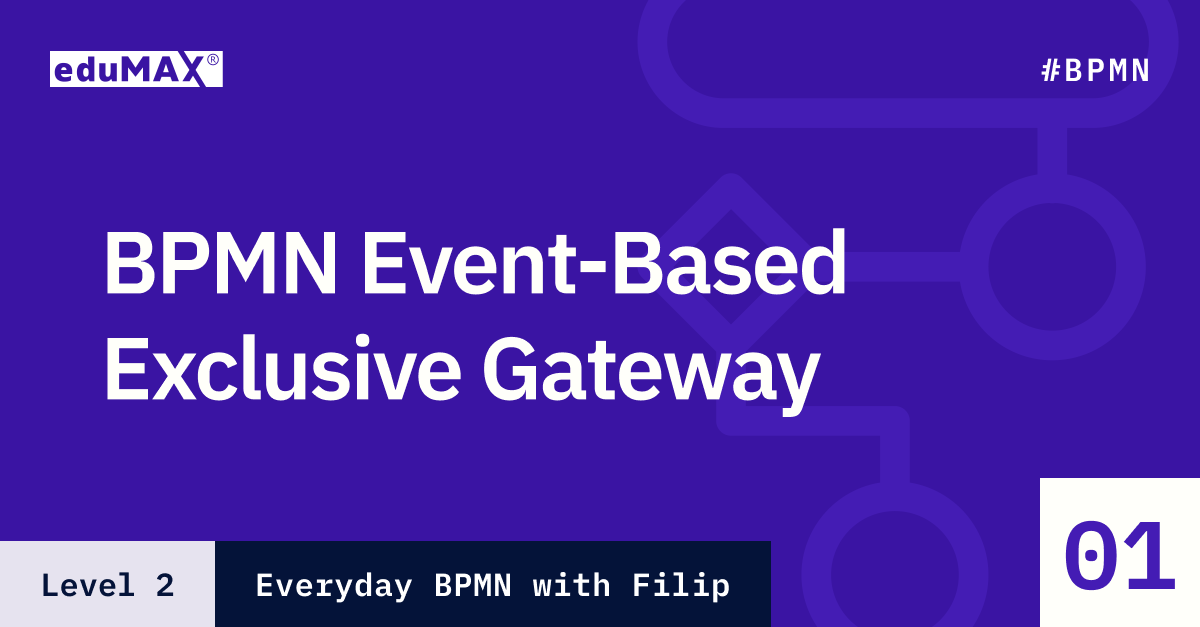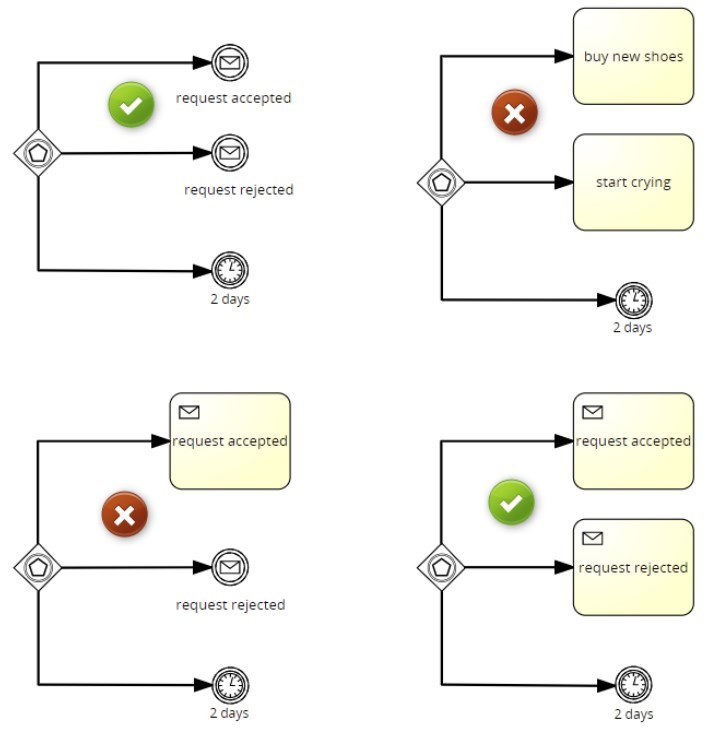BPMN Event-Based Exclusive Gateway

25-02-2024
4 min
BPMN Exclusive Gateways
In BPMN, there are two types of exclusive gateways.

They're called "exclusive" because, essentially, at most one of the outgoing paths can be taken.
The Event-Based Gateway is a specific subtype of an exclusive gateway and should be used when "the decision is made by another Participant, based on data that is not visible to the Process," as specified in the BPMN specification.
In certain stages of our processes, we sometimes need to await an action or decision made by an external participant. In these cases, we don't make the decision ourselves, but we must react accordingly. A simple example of this is when we submit a loan request ❶ to a bank.

What happens next isn't dependent on our decision; rather, the decision is made externally, based on criteria that are unknown to us. This is why we can't use the "normal" Data-Based Exclusive gateway for ❷. I'm sure you can think of many instances where this pattern applies.
Although Event-Based Gateways can also be used to initiate a process, I generally advise against using them in this way and will not show an example of such use here.
Event-Based Gateway Restrictions
There are several important restrictions to consider when using the Event-Based Gateway:
- Outgoing paths can't have conditional expressions.

- There's no option for a default path.

- A converging version of this gateway is not allowed.

- Only intermediate catching events or receive tasks can directly follow this gateway, with some specific limitations.

Valid event types include Message, Signal, Timer, Conditional, Multiple, Parallel Multiple. Invalid types are Error, Cancel, Compensation, and Link.
- You can use either receive tasks or message events, but not both together.

- Placing "none" events immediately after this gateway is not allowed.

- This is a gateway, so must be represented by a diamond shape.

Summary
A BPMN Event-Based Gateway serves as a valuable element in Business Process Model and Notation (BPMN) because it can handle decision-making based on external factors or participants.
Unlike other gateways, the Event-Based Gateway allows for a process to pause and await input or decisions from external sources, which is particularly useful in scenarios where the outcome depends on factors beyond the control of the process itself. This flexibility enables businesses to model processes that involve interactions with external entities, enhancing adaptability and responsiveness in complex workflows.
Additionally, the Event-Based Gateway's inclusion in BPMN ensures a clear representation of such decision points in process diagrams, facilitating better understanding and communication among stakeholders involved in process design and execution.
Overall, the Event-Based Gateway adds a crucial layer of sophistication to BPMN, enabling businesses to model processes that mirror real-world scenarios more accurately.
Event-Based Gateway Quiz (Level 2, Lesson 1)
Take the Event-Based Gateway Quiz to test your knowledge!